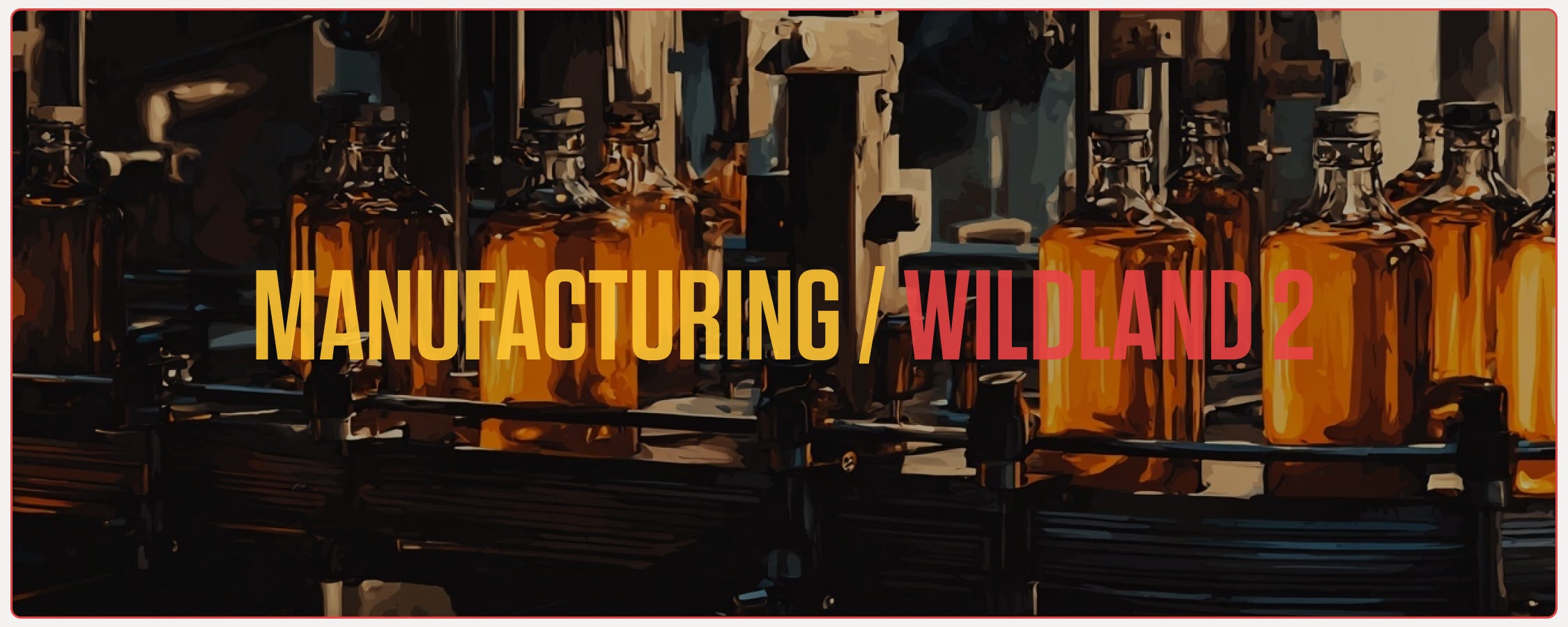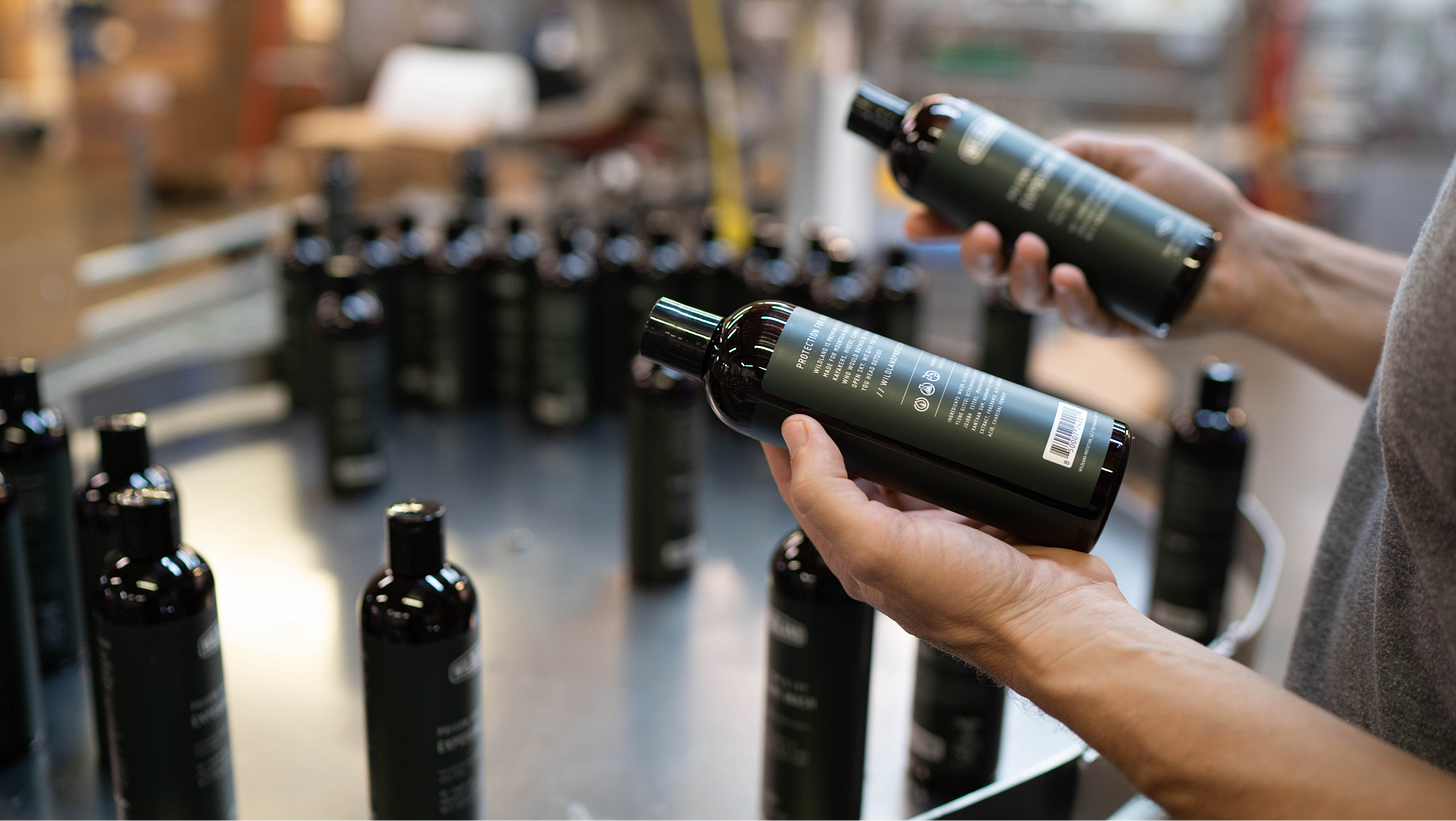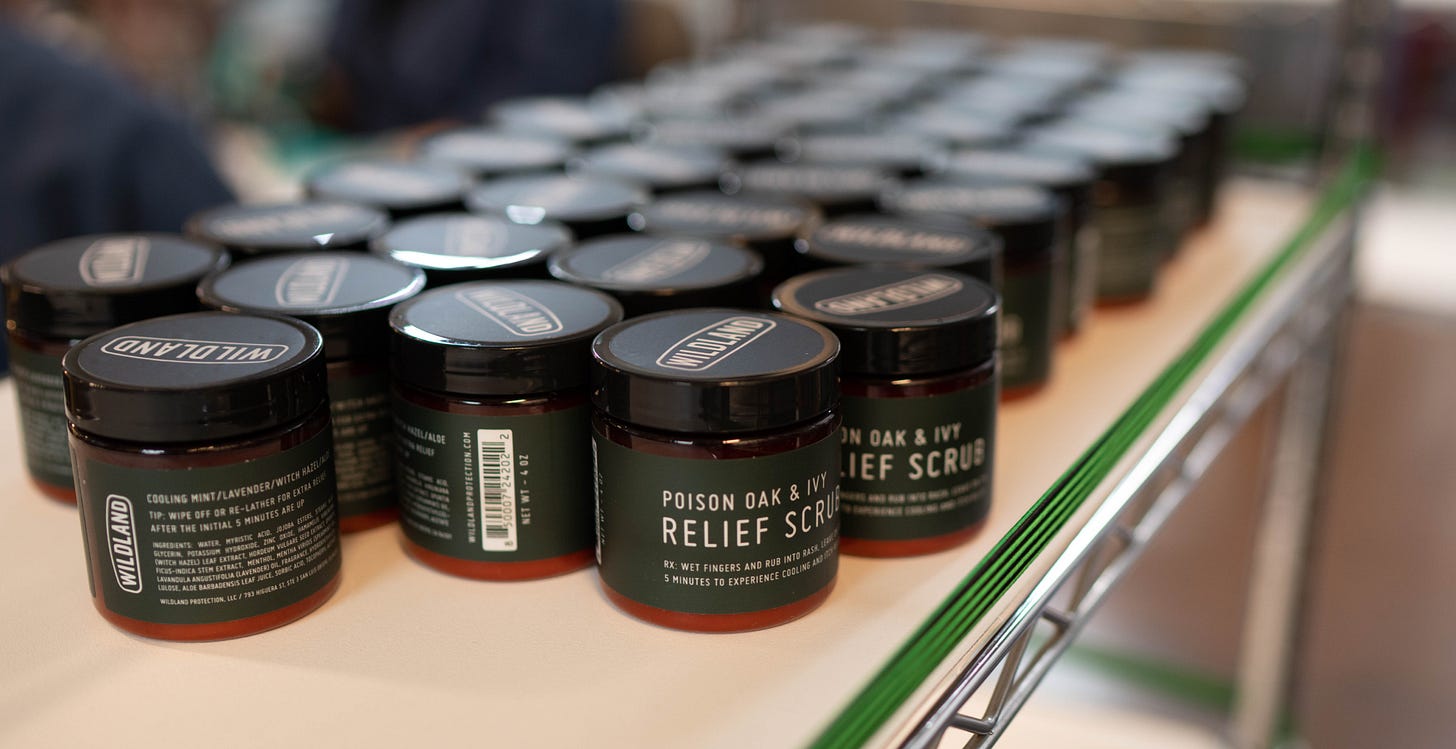Manufacturing & Product Realities: What I Wish I Knew
Part 2: Lessons learned while launching then closing my skincare company.
Wildland manufactured our first round of products in 2018. I had sold my software company at the end of 2015, and wanted to try my hand at launching a physical product as opposed to a digital venture.
Looking back, I recognize now why most people in manufacturing wondered why I would switch from digital to physical, but at the time, it sounded like a ton of fun. Not only could I create a brand that sits on a store shelf, but I could also create products to help people feel better.
Here’s the truth: Physical products are brutal.
We dove headfirst into the world of poison oak and ivy. First, we studied how to remove the harmful oils (Urushiol, btw) from skin. Then we dug into the best OTC methods for relief and healing. Piece by piece, that research shaped what we believed was the ideal product suite for launch.
The next step was figuring out how the hell to manufacture our little idea.
Jargon common to people in the industry was like a brand new language to us. We took the time to learn the key terms as quickly as possible. “Formulation” is what manufacturers call their set of ingredients to produce the product. “MOQ” is the minimum order quantity, signifying the number of units you will need to purchase to get them out of bed to work on your product.
I knew I needed to be fluent in this new language to ensure we received the output we wanted.. We were able to navigate a foreign category to create new, modern, products that worked better than anything previously in the market.
Manufacturing skincare products demystified, we were ready to order and start selling.
Numbers. Numbers. Numbers.
A common MOQ for skincare products is 5000. Two products were $3.50/unit, and the other was $4.20/unit. This put us at roughly $56K for our first manufacturing run of untested products, not including freight shipping, storage, receiving, or any other miscellaneous, unseen costs.
Yikes. It was time to get selling.
In the first couple of weeks, we sold around twenty units. It was a great start, until I broke down the math. Our COGS (cost of goods sold - all the direct costs involved in producing or purchasing the products you sell) rested right around $6.50/unit. The sales came via Instagram, with a CPA (cost per acquisition) realistically around $10 (our spend was about $200-$250). We also started with a flat $5 shipping rate for all sales, to not deter people from purchasing because of the high shipping cost (imagine buying a $20 product and it costing $10+ to ship… ouch).
Looking at all those costs, for this initial campaign (on the low end) we were paying about $18 per unit to sell. Our products are priced between $16 and $24.
Depending on which products were purchased we were either losing money or maybe making a buck or two.
This puts us on track to pay back our initial $56K we personally invested for manufacturing at around the year 2175.
Now fast-forward to a year later, when, through a turn of events, I was able to get our brand into REI. This is the big time, right? Wrong.
They bought a modest amount of product, but instead of paying retail (which we never expected), or even wholesale (50% of MSRP), typical of big box retail agreements they paid less than 40% of MSRP. We also were required to pay for shipping, along with additional random fees applied to us as a vendor. In this case we were maybe making around 50¢ per unit. Awesome.
Reality Check.
I’ll be honest - numbers over the first year hit me pretty hard.
I was used to spending a few months developing digital products, then releasing a solution that would have no COGS to consider, no wholesale discounts, no shipping costs, minimal storage fees, with the manufacturing costs baked into the original creation. If I wanted “more” products, I didn’t have to sink the revenue into making new units, unless I wanted to add features.
Moving into the physical goods realm brought a massive reality check.
Before delving into what these numbers actually meant for Wildland (stay tuned for my next article), I wanted to highlight some considerations that I genuinely wish someone had shared with me before I started manufacturing products.
Things I Wish I Had Known
In no particular order, here are some things I wished someone would have shared with me before I started my manufacturing journey.
It’s not hard to create a product - just ask the right questions. If you’re curious about what it means to manufacture something, just be a student. Ask questions, learn quickly. Chances are it’s a lot easier than you think.
Start with the lowest MOQ. Order as if you won’t be able to sell through the initial inventory. It costs more per unit, but you’ll be happy to reorder after product validation has occurred.
Negotiate everything. All prices are made up by someone, and some salespeople are given the freedom to lower prices, quantities, change timelines, etc. Just try it!
Don’t overbuild SKUs. We thought we needed the whole product suite to launch, but we didn’t. Identify the one flagship product you feel the best about and start there.
Merch is a trap. Realistically, company merch will just act as future giveaways, and you’ll never recoup the time and money invested in it.
3PLs: wait until Product-Market Fit. 3PLs (third-party logistics companies handling your storage, picking, and shipping) should be viewed as an expense that is saving you time once you’ve hit product-market fit, as opposed to a requirement for launch. They’re expensive, and the wrong one will break you.
Keystone pricing realities (wholesale vs retail). “Keystoning” needs to be considered when setting your MSRP (retail price of your product). Keystoning is the concept of retail stores doubling the wholesale price to sell in their shop. Shops will buy your product at your wholesale cost (expect 50% of MSRP), while big box retailers will pay between 25-40%, paying you 60 days (and in some cases 90 days) after they’ve receive the product.
Vet manufacturers and 3PL partners carefully. Find current and older similar companies using their services and ask direct questions about their experiences. For both manufacturers and 3PLs, changing is a lot more difficult than making the right decision from the start.
Visualize Quantities. It’s easy to order 1000 or 5000 of an item without considering the storage footprint it will take up. Understand what it feels like to store the amount of product you are purchasing - it might force a lower initial quantity.
Ask realistic questions about your success. What does success look like to you? How much do you expect to sell each year? What does that equate to financially? How many units do you need to sell within a certain timeframe to make it a full-time job? Understanding these metrics helps attach realities to your venture.
If you’re like me, you love solving problems. Creating an outdoor skincare brand then manufacturing products for that brand was a problem to solve, and I solved it.
In hindsight, I wish I would have taken a step back and asked more questions. I wish I would have started slower and smaller, vetting the poison oak and ivy skincare market, along with my manufacturing and 3PL partners more.
More than anything, I wish I understood the meaning of manufacturing and selling a product as an independent business more deeply. Although there was nothing astronomically bad about this first round of manufacturing, some of these initial decisions set the stage for future losses.
If you are thinking about manufacturing your first products, learn from my mistakes. Take your time, vet partners, start small. This will help you build a lasting brand and business.





